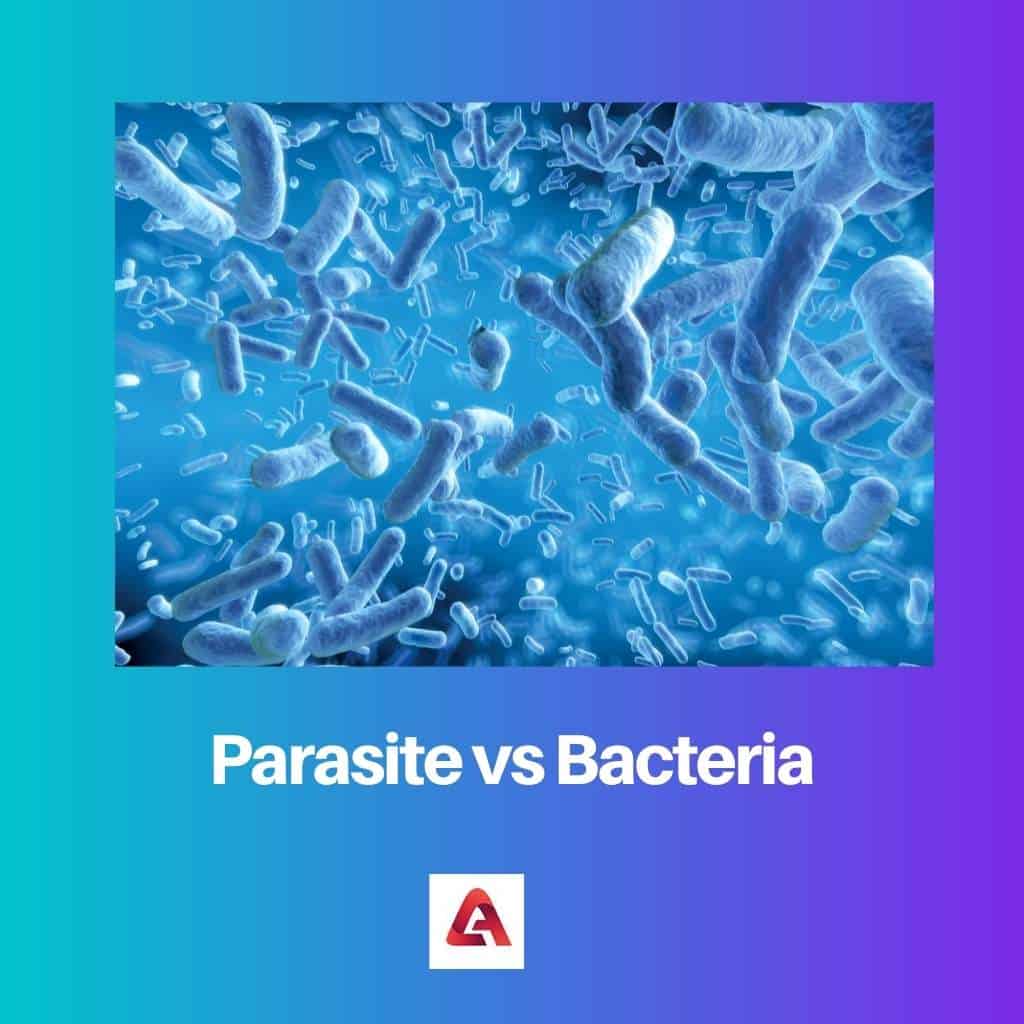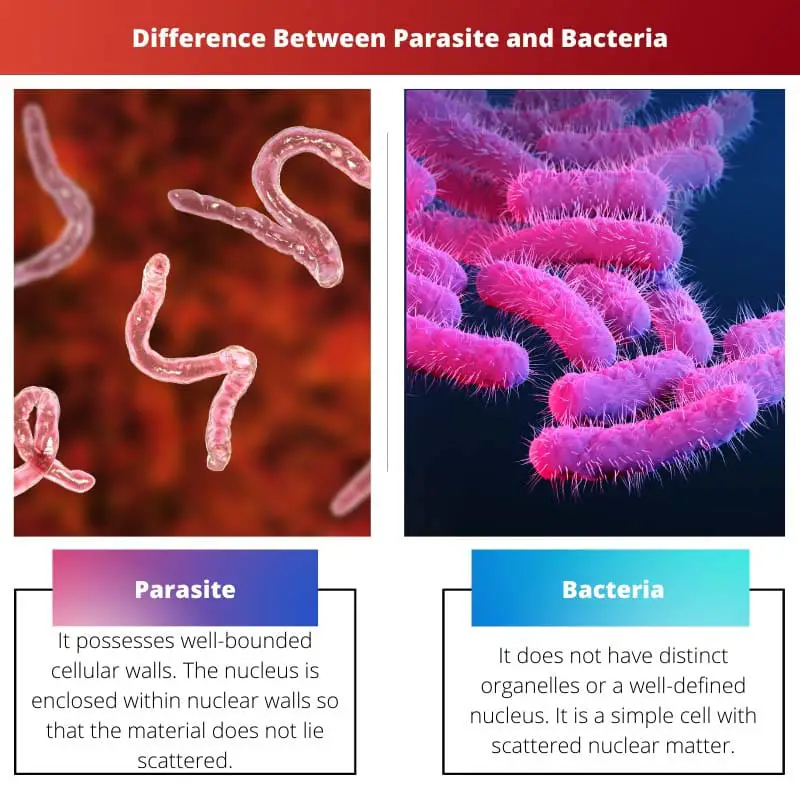Parasites are living organisms that completely rely on other organisms for food. The organisms that they use for their living are called Hosts.
Key Takeaways
- Parasites are organisms that live on or inside a host organism and depend on it for their survival.
- Bacteria are single-celled microorganisms that can live independently or as parasites.
- Unlike bacteria, parasites are larger and can be seen with the naked eye.
Parasite vs Bacteria
Parasites are organisms that live on or inside another organism (the host) and depend on the host for their survival. Parasites can be single-celled organisms. Bacteria are single-celled organisms that can be found almost everywhere, including soil, water, and inside the human body. Some bacteria are beneficial.

Parasites seek nourishment and shelter on their and exist in a symbiotic relationship with them. The organism acting as a host is a different species and is much bigger than Parasites in size.
Bacteria are single-celled organisms that live and reciprocate in great numbers. Bacteria lacks membrane and the nuclear material inside it is scattered within the cell.
Comparison Table
| Parameters of Comparison | Parasite | Bacteria |
|---|---|---|
| Cell Structure | It possesses well-bounded cellular walls. The nucleus is enclosed within nuclear walls so that the material does not lie scattered. | It does not have distinct organelles or a well-defined nucleus. It is a simple cell with scattered nuclear matter. |
| Number of Cells | It is mostly multicellular (except protozoa) and is categorized under Eukaryotes due to its complex cell structure. | It is unicellular and is categorized under Prokaryotes due to its primitive cell structure. |
| Need of Host | It needs a host to survive. It can exist inside or outside the host but has to be connected to it. | It might or might not need a host and derive the food from the surroundings, can exist inside or outside a body or even on the surfaces. |
| Size | They are bigger in size and can be seen through naked eyes. | It is smaller in size and some of them are microscopic. |
| Nature of the Organism | They are always pathogenic. They can replicate inside or outside host but exist when they are few in number. | They can be sometimes harmful but mostly beneficial. They exist in millions and form colonies. |
What is Parasite?
Parasites are organisms that exist in symbiosis with another organism as host to seek food and shelter from them for survival. This symbiotic relationship is beneficial to parasites but harmful to the host.
Protozoa and Helminths affect the human body by affecting the guts and the gastrointestinal system, causing problems like Diarrhea, abdominal cramps, and fatigue.
Helminths are also known as worms and do not multiply inside the human body. They are further classified as flatworms, roundworms, and hookworms.
Ectoparasites like ticks, lice, fleas, and mites get attached to the skin and live there for a prolonged period causing itchiness. These diseases caused by parasites can be prevented by improving sanitation and cleanliness in places.

What is Bacteria?
Bacteria is the most primitive form of life existing in nature. They can survive in any ecological condition and might or might not need a host to survive.
Some species of bacteria are pathogenic and can cause infectious diseases like cholera, syphilis, and also some respiratory diseases that might prove fatal.
It also plays a key role in the mining sector to recover metals like gold, copper, and palladium. It can convert biomass into bioenergy by the decomposition of organic matter into usable energy.

Main Differences Between Parasite and Bacteria
- Parasites are larger in size and are visible to the naked eye. Bacteria are small in size, and some of them are microscopic.
- Parasites are always pathogenic. They can replicate inside or outside the host but exist when they are few in number. Bacteria can sometimes be harmful but mostly beneficial. It exists in millions in number and form colonies.






